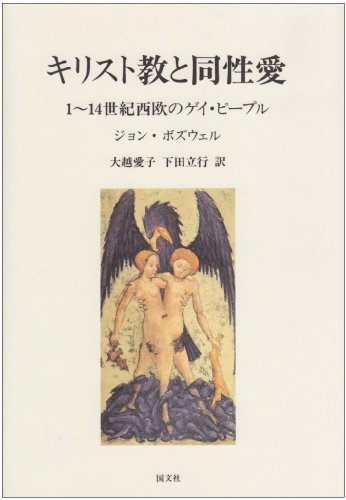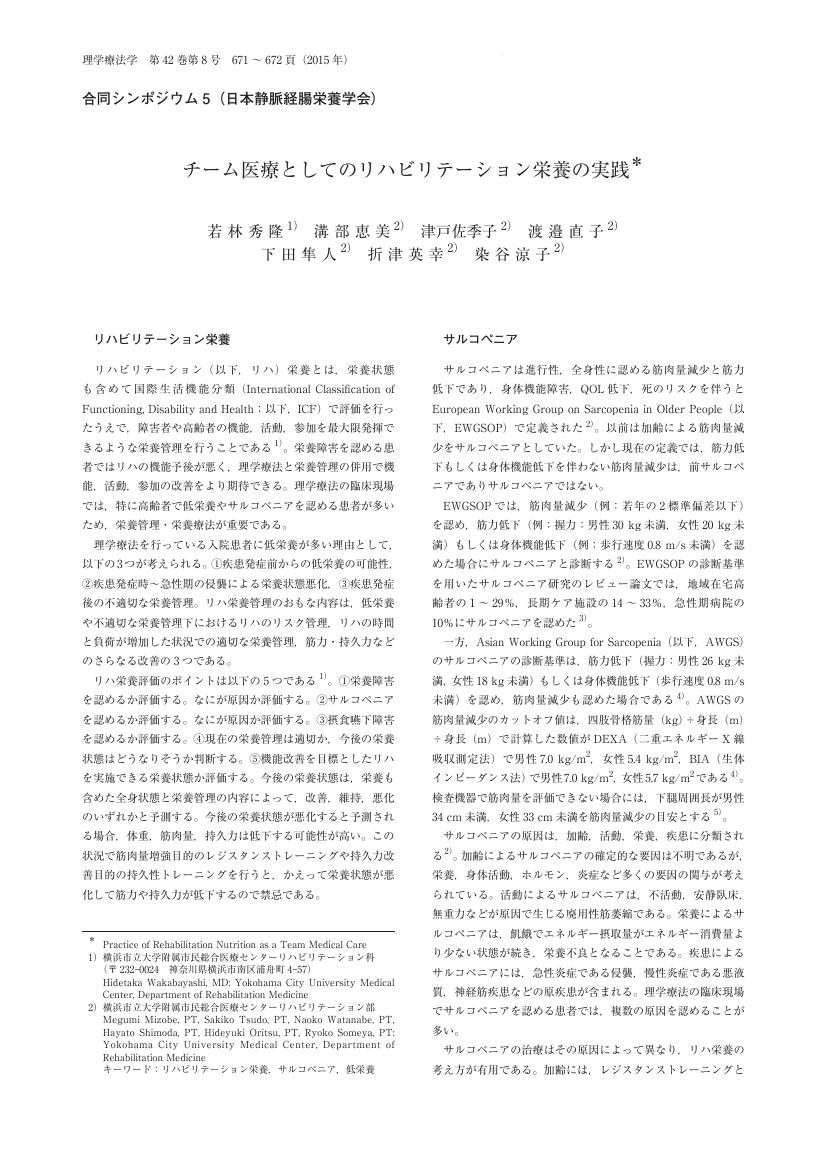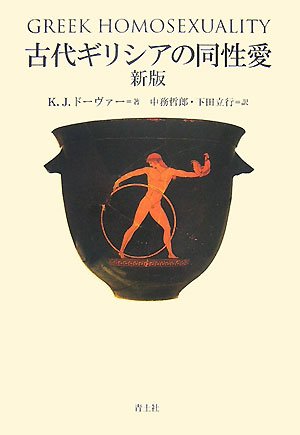53 0 0 0 OA 行動免疫システムと福島県近隣の汚染地域の推定との関連
- 著者
- 樋口 収 下田 俊介 小林 麻衣 原島 雅之
- 出版者
- 日本グループ・ダイナミックス学会
- 雑誌
- 実験社会心理学研究 (ISSN:03877973)
- 巻号頁・発行日
- vol.56, no.1, pp.14-22, 2016 (Released:2016-10-06)
- 参考文献数
- 28
- 被引用文献数
- 5 1
東京電力福島第一原子力発電所の事故から5年以上たった今なお福島県の産物の風評被害は続いている。なぜ消費者は福島県の産物を危険視するのだろうか?2つの実験で行動免疫システムが活性化すると,汚染地域を過大に推定するかどうかを検討した。実験1では,プライミングの条件(病気の脅威条件vs.統制条件)に関係なく,慢性的に感染嫌悪傾向が高い人の方が低い人よりも,汚染地域を過大に推定していた。実験2では,感染嫌悪傾向が高い人では病気の脅威条件の方が統制条件よりも汚染地域を過大に推定していた。また感染嫌悪傾向が低い人では条件で差異はみられなかった。風評被害と行動免疫システムの関係について考察した。
42 0 0 0 仏教学のためのデジタル学術編集システムの構築に向けたモデルの提案と実装
- 著者
- 永崎 研宣 大向 一輝 下田 正弘
- 雑誌
- 情報処理学会論文誌 (ISSN:18827764)
- 巻号頁・発行日
- vol.63, no.2, pp.324-334, 2022-02-15
仏教学のための知識基盤の構築にあたり,テキストの共有は重要な課題である.これを効率的・効果的に実現することを目指すデジタル学術編集システムにおいて,近年普及しつつある国際的な画像共有の枠組みであるIIIF(International Image Interoperability Framework)は実装と運用の側面を改善する役割を果たしうる.筆者らは,仏教学のためのデジタル学術編集システムのモデルを設計し,そのモデルにおいて実装・運用面を改善する手段としてIIIFを位置づけ,仏典全文テキストデータベースSAT2018においてそれに基づく実装を行った.これを通じて,デジタル学術編集システムの運用におけるスケーラビリティと持続可能性に関する課題を明らかにした.
19 0 0 0 OA 幕末における薩長軍事構想の再検討 : 「討幕」の意味に注目して
- 著者
- 下田 悠真
- 出版者
- 法政大学大学院
- 雑誌
- 大学院紀要 = Bulletin of graduate studies (ISSN:03872610)
- 巻号頁・発行日
- vol.89, pp.20-34, 2022-10-31
- 著者
- 橋本 鉱市 村澤 昌崇 保田 直美 井本 佳宏 白旗 希実子 丸山 和昭 日下田 岳史 谷村 英洋 荒井 英治郎 石井 美和 高橋 望 高橋 哲 小島 佐恵子 勝野 正章
- 出版者
- 東京大学
- 雑誌
- 基盤研究(B)
- 巻号頁・発行日
- 2017-04-01
近年、教育課題の複雑化に対し、限られた予算と人員の下に効率的に対応する手法のひとつとして、教育専門業務のアウトソーシング(OS)が模索されている。本研究は、就学前教育、初等中等教育、高等教育の各段階で進むOSの実態と影響を、総合的かつ実証的に分析し、これからの教育専門職のあり方、外部機関との連携における課題、方策を示すことを目的としている。研究計画としては、①国際比較調査:文献調査及び訪問調査を通じ、教育分野における専門業務のOSを促したマクロレベルの要因を解明する。②質的調査:教育機関、教育専門職、及びアウトソーシングを担う外部組織への聴き取り調査を通じ、OSが教育専門職の業務に与える影響や、必要な方策について明らかにする。③量的調査:質問紙調査及びWeb アンケートを通じ、我が国の教育分野における専門業務のOSの実態と潜在的な需要を把握する。上記3課題に関する初年度の研究実績としては、以下のとおりである。①英国への訪問調査を実施し、マンチェスター大学の研究者、全英教員組合の専門職員、民間教員研修プロバイダーから、教員研修民営化の現状と課題についての詳細な情報供与を受けるとともに、 それぞれの視点・立場での認識を聴き取った。民間教員研修の質保証という課題のほか、教職の専門職性の変容との関係についても示唆が得られた。②初中等レベルでは、学校における働き方改革に関連する基礎的作業として分業化、協業化の精査を進め、東北地方のA県ならびにB市の教育委員会関係者とラポールを形成した。また高等教育レベルでは、都下5大学の教職員に対する聞き取り調査を行った。③初中等レベルでは、小学校・中学校・高校の教員に対し教育業務のOSに対する意識に関する質問紙調査のたたき台を作成し、調査対象地域の選定を行った。高等教育レベルでは、大学教育のOSの現状を明らかにするための質問紙調査の設計を進めた。
16 0 0 0 OA 医師国家試験模擬試験におけるマークミスについての解析
- 著者
- 一杉 正仁 菅谷 仁 平林 秀樹 妹尾 正 下田 和孝 田所 望 古田 裕明
- 出版者
- 獨協医科大学
- 雑誌
- Dokkyo journal of medical sciences (ISSN:03855023)
- 巻号頁・発行日
- vol.35, no.2, pp.79-84, 2008-07
- 被引用文献数
- 1
医学部6年生を対象に,試験におけるマークミスの実態調査を行い,有用な予防対策を検討した. 36人の学生が530問の医師国家試験用模擬試験を解答し,自己採点結果と実際の採点結果を照合した.半数以上の受験生が1問以上のマークミスをおかしていた.ミスの具体的内容では,自己採点が正しいものの,マークは誤っていた場合が45.7〜54.8%と最も多く,選択数を誤っていた場合が30.4%〜35.7%と続いた.また, 5肢複択問題のしめる割合が増えるにしたがって,マークミスの頻度も有意に増加する傾向であった.受験者の正味試験時間を調べると,規定時間の約10%は見直し時間として利用できることがわかった.受験者は,自ら選択した解答肢が正確にマークシートに記入されているかを見直すことで,不本意な失点が防げると思われる.マークミス予防の指導は, fail-safeの対策としても重要であり,医師となった後にも十分役立つと考えられる.
14 0 0 0 OA 大学進学機会の地域格差に関する仮説生成型研究
9 0 0 0 OA 西郷隆盛の維新理念と明治六年政変 「御一新の基」を手掛かりとして
- 著者
- 下田 悠真
- 出版者
- 『人文×社会』編集委員会
- 雑誌
- 人文×社会 (ISSN:24363928)
- 巻号頁・発行日
- vol.1, no.2, pp.247-261, 2021-06-15 (Released:2021-06-18)
- 著者
- 下田 正弘
- 出版者
- 日本印度学仏教学会
- 雑誌
- 印度學佛教學研究 (ISSN:00194344)
- 巻号頁・発行日
- vol.68, no.2, pp.1043-1035, 2020-03-20 (Released:2020-09-10)
- 参考文献数
- 19
More than fifteen years ago, Schopen (2004, 492) revealed his concern about a certain understanding widespread among scholars of the history of Indian Buddhism, writing, “[t]he historical development of Indian Buddhism used to be presented as simple, straightforward, and suspiciously linear. It started with the historical Buddha whose teaching was organized, transmitted, and more or less developed into what was referred to as early Buddhism. This Early Buddhism was identified as Hīnayāna ... , Theravāda ... , or simply ‘monastic Buddhism.’ ... A little before or a little after the beginning of the common era this early Buddhism was, according to the model, followed by the Mahāyāna ... ” A similar apprehension has recently been expressed in slightly different terms by Harrison (2018, 8–9). It is certainly surprising that scholars’ basic frame of reference for the history of Indian Buddhism is more or less what it was in the late 19th century, despite all of the progress recently made in this field. Developments in the particulars of the subfields of Indian Buddhist history have not entailed comparable developments in the broader frame of reference, despite the fact that such a frame is what allows us to identify and synthesize the details of our field. This paper attempts to address this problem by focusing on three points: first, it reexamines the current state of affairs of materials for the reconstruction of the history of ancient India; second, it reevaluates the status of Pāli materials as historical sources; and third, it reconsiders the concept of ‘canon’ in Buddhist studies.
9 0 0 0 OA 放棄水田の植生と評価 : 広島県の湿性放棄水田
- 著者
- 下田 路子
- 出版者
- 植生学会
- 雑誌
- 植生学会誌 (ISSN:13422448)
- 巻号頁・発行日
- vol.13, no.1, pp.37-50, 1996-07-30 (Released:2017-01-06)
- 参考文献数
- 24
- 被引用文献数
- 1
There are many abandoned rice fields all over Japan. Most of them were abandoned by set-aside programs that began in 1970. This paper deals with the vegetation of wet abandoned rice fields in Hiroshima Prefecture. From the case study in the Saijo Basin, Higashi-Hiroshima, four plant communities are described : the Juncus leschenaultii community on the first-year fields, and three communities on older fields, the Ischaemum aristatum var. glaucum-Eupatorium lindleyanum community, the Isachne globosa community and the Eleocharis kuroguwai community. Vegetation change on abandoned rice fields is explained based on the species composition of abandoned rice fields communities and natural wetlands communities. Six threatened plant species were found on abandoned rice fields in Hiroshima Prefecture. Old abandoned rice fields have developed into various kinds of wetlands such as swamp woods, Moliniopsis marshes, sedge marshes and reedswamps. Although the old abandoned rice fields are the secondary wetlands, they will be more and more valuable in the future as the wildlife habitats not only in Hiroshima Prefecture but also in many other places in Japan.
8 0 0 0 OA 仙腸関節障害の治療経験
- 著者
- 森本 大二郎 井須 豊彦 金 景成 菅原 淳 濱内 祝嗣 下田 祐介 笹森 徹 松本 亮司 磯部 正則
- 出版者
- 日本脊髄外科学会
- 雑誌
- 脊髄外科 (ISSN:09146024)
- 巻号頁・発行日
- vol.24, no.1, pp.6-11, 2010 (Released:2017-05-11)
- 参考文献数
- 22
- 被引用文献数
- 7 3
Objective : Sacroiliac joint (SIJ) dysfunction can produce lower back pain and referred symptoms in the buttocks, legs and groin. Approximately 3.5~30% of all lower back pain is associated with SIJ dysfunction. Recently, we have been treating more SIJ dysfunction cases due to the increasing incidence of lumbar degenerative disorder (LDD). Here we report our experience in treating 20 SIJ dysfunction patients. Patients and methods : The study involved 20 SIJ dysfunction patients (5 male and 15 female) with a mean age of 67.6 years (range 35~81 years). SIJ dysfunction was diagnosed using the one finger test, modified Newton test and sacroiliac joint block. Patients initially underwent conservative treatment, including sacroiliac joint block, stabilization using pelvic belts and rehabilitation. Sixteen patients underwent surgery for LDD. The mean follow-up period was 4.1 months. The clinical outcomes were evaluated using the Japan Orthopedic Association Scale score (JOA score). Results : All patients with SIJ dysfunction showed symptom improvement. In the group of the patients who underwent the LDD operation, the improvement score and recovery rate of treatments for SIJ dysfunction tended to be lower than for those without surgery for LDD. Fourteen patients (70%) had some referred symptoms in the leg and lower abdomen. Conclusion : Our treatment of SIJ dysfunction resulted in good clinical outcomes. SIJ dysfunction should be considered a cause of lower back pain and a potential factor in failed back surgery. SIJ dysfunction should be considered when designing treatments for LDD.
8 0 0 0 OA ゆで卵の作成と放置に伴うオボムコイドの卵黄への浸透
- 著者
- 坂井 堅太郎 松岡 葵 牛山 優 下田 妙子 上田 伸男
- 出版者
- 一般社団法人 日本アレルギー学会
- 雑誌
- アレルギー (ISSN:00214884)
- 巻号頁・発行日
- vol.47, no.11, pp.1176-1181, 1998-11-30 (Released:2017-02-10)
- 参考文献数
- 12
- 被引用文献数
- 4
鶏卵の卵白中のオボムコイド(OM)は, 他の卵白タンパク質に比較してアレルゲン活性が最も高く, 加熱により凝固しない特徴を持っている.鶏卵を15分間沸騰水浴中で作成したゆで卵の卵黄をOMに対する特異抗体を用いたイムノブロットとELISAにより分析したところ, OMは加熱凝固卵白の水溶性成分として卵黄側へ拡散・浸透していることを認めた.卵黄中のOMは, ゆで卵作成直後で卵黄1g当たり4.8±0.8μgと定量された.ゆで卵を室温に120分間放置したゆで卵から取り出した卵黄中のOMは卵黄1g当たり78.8±31.3μgと定量され, ゆで卵作成直後の16.4倍であった.加熱凝固卵白水溶性画分のOMとタンパク質量は, それぞれ14.2±11.9mg/mlと37.7±3.2mg/mlと定量され, OMは全タンパク質量の約40%を占めていた.ゆで卵の作成により卵白中のOMが卵黄側へ拡散・浸透することは避けられないと思われるが, アレルゲン性の強いOMの感作をできるだけ回避するには, 長時間放置したゆで卵の卵黄を使用するのは望ましくないであろう.
8 0 0 0 キリスト教と同性愛 : 1〜14世紀西欧のゲイ・ピープル
- 著者
- ジョン・ボズウェル著 大越愛子 下田立行訳
- 出版者
- 国文社
- 巻号頁・発行日
- 1990
8 0 0 0 OA チーム医療としてのリハビリテーション栄養の実践
7 0 0 0 OA 買物意識の2次元モデルについての検討:日本の消費者における快楽次元と効用次元の測定
- 著者
- 大久保 暢俊 下田 俊介 鷹阪 龍太 山田 一成
- 出版者
- 日本社会心理学会
- 雑誌
- 社会心理学研究 (ISSN:09161503)
- 巻号頁・発行日
- vol.33, no.3, pp.156-163, 2018-03-25 (Released:2018-03-25)
- 参考文献数
- 21
The purpose of this study is to investigate consumer attitudes towards shopping in Japan. Factor analyses of data by 1,286 nonprobability online panels in a Web survey (in 2014) confirmed a hypothesized two-factor structure (the hedonic and utilitarian), but although the hedonic subscale had enough internal consistency, the utilitarian subscale had relatively low internal consistency. The correlations of the scores on consumer attitudes towards shopping with other measures, such as bargain orientation, impulsive buying tendency, and frugality, provided support for the criterion validity of each subscale. In many cases, these relationships were not affected by variables such as gender, life stage, and household income. Implications for the two-dimensional model of Japanese consumer attitudes towards shopping are discussed.
7 0 0 0 古代ギリシアの同性愛
- 著者
- K・J・ドーヴァー著 中務哲郎 下田立行訳
- 出版者
- 青土社
- 巻号頁・発行日
- 2007
- 著者
- 高橋 匡 倉持 俊克 安田 麻衣子 下田 直嗣 平尾 啓
- 出版者
- 一般社団法人 情報科学技術協会
- 雑誌
- 情報プロフェッショナルシンポジウム予稿集 第12回情報プロフェッショナルシンポジウム
- 巻号頁・発行日
- pp.97-102, 2015 (Released:2015-12-04)
- 参考文献数
- 11
近年、企業を取り巻く環境変化はめまぐるしく、顧客ニーズは多様化している。このような市場環境下、顧客ニーズに対応したイノベーションを継続的に創出するために、社外の技術やアイデアを社内に取り入れるオープンイノベーションを活用し、技術開発を行う企業が増えている。このような背景を受け、2014年度PAT-LIST研究会で顧客ニーズに対応した技術開発を自社で行うか他者と提携して行う(オープンイノベーション)ことが得策かを検証する手法を開発し、消臭技術を対象に実践したので紹介する。
6 0 0 0 OA カイコ幼虫の歩行距離と野外での生存の可能性
- 著者
- 下田 みさと 金勝 廉介
- 出版者
- 社団法人 日本蚕糸学会
- 雑誌
- 蚕糸・昆虫バイオテック (ISSN:18810551)
- 巻号頁・発行日
- vol.85, no.3, pp.3_145-3_151, 2016 (Released:2017-09-13)
- 参考文献数
- 24
全齢を通してカイコ幼虫の移動距離を調査した。移動距離は稚蚕期には起蚕で高く,壮蚕期にはあまり変化しない。移動距離を体長で除した歩行活性は壮蚕期より稚蚕期で高く,特に蟻蚕や起蚕時に高い。歩行活性が高い蟻蚕の拡散性について調査したところ,約70%が半径50cmの円周上まで拡散することなく死亡した。障害物を置くと拡散が抑制され,97%の蟻蚕が円周内にとどまった。F1の拡散性はカイコより高く,クワコより低かった。さらに,カイコ蟻蚕が野外で桑まで到達した場合を想定し,野外での放飼実験を行った。受精卵を置いたところ,孵化した蟻蚕997頭のうち,2齢まで成長できたのは4頭で,3齢まで生き残った個体はなかった。4齢と5齢それぞれの起蚕を用いた場合も営繭するまで生き残ることはなかった。
6 0 0 0 OA タイ王国・ミャンマー連邦に居住する 8 民族の身長発育曲線の検討
- 著者
- 國土 将平 中野 貴博 佐川 哲也 笠井 直美 小磯 透 鈴木 和弘 下田 敦子 大澤 清二
- 出版者
- 日本発育発達学会
- 雑誌
- 発育発達研究 (ISSN:13408682)
- 巻号頁・発行日
- vol.2010, no.46, pp.46_11-46_26, 2010 (Released:2011-02-20)
- 参考文献数
- 36
- 被引用文献数
- 1
The purpose of this study was to investigate the standardization of height growth curves of 8 ethnic groups in Thailand and Union of Myanmar. The height of 16,000 children from 5 to 18 years old of 8 ethnic groups, i. e., Thai, Karen, Hmong, Lisu, Akha, and Lahu in Thailand, Burmese and Mon in Myanmar, was measured from 1994 to 2004 in Thailand, from 2005 to 2008 in the Myanmar. Modified BTT model was applied to height growth curve, and the fluctuation of standard deviation was smoothed using weighted moving variation and smoothing function developed by the authors. Finally growth charts were obtained using z-score of normal distribution. Resultant growth charts were generally satisfactory and were seemed to be useful from the perspective of data utilization. Though there are a few problems on the growth charts such as variance was decreased for more than 15 years old, or height growth has continued till 18 years old in some ethnic groups. Representing heights were different more than 10 cm among ethnic groups at 18 years of age. It was confirmed that it is important to create a growth chart by ethnic group respectively and utilize it in order to evaluate properly the growth status and the nutritional condition of the children.
- 著者
- 下田 尊久 石橋 映里
- 出版者
- 記録管理学会
- 雑誌
- レコード・マネジメント (ISSN:09154787)
- 巻号頁・発行日
- vol.76, pp.47-63, 2019 (Released:2019-03-25)
地方における民間放送会社制作のラジオ・テレビ番組作成過程で作られた原資料、とくにドラマ放映後の台本・脚本等について、社内保存の可能性を検討した。すなわち、これら資料の一次情報資源としての自社内アーカイブズの有用性と、その検証プロセスが記録管理を学ぶ学生にとって社会貢献を可能にする実務研修課題であると仮定した。そこで大学の図書館情報学課程が実施している放送脚本等を教材としたアーカイブズ構築の可能性を求める産学連携プログラムに注目した。 本研究が対象とした大学と地方企業の連携による協働プログラムでは、図書館情報学課程の学生による番組制作過程の一次資料の整理とアクセス環境整備のためのデータベース準備作業、さらに活用のためのアイデアの提供がなされていた。本プロジェクト研究は、このプログラムによる活動が、記録管理の理解と普及にとって有効であることを明らかにする試みである。
5 0 0 0 OA 主食としての米食
- 著者
- 下田 吉人
- 出版者
- 社団法人 大阪生活衛生協会
- 雑誌
- 生活衛生 (ISSN:05824176)
- 巻号頁・発行日
- vol.11, no.1, pp.1-4, 1967-02-10 (Released:2010-03-11)





